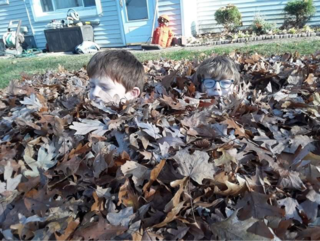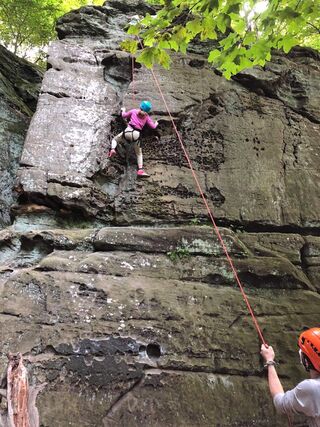Health
How Parents and Kids Can Both Stay Sane This Winter
Adopting two Scandinavian practices can help improve well-being.
Posted September 29, 2020
Much has been written about mental health concerns of people of all ages during the COVID-19 pandemic. We have all had to adjust to varying degrees of change in routine, from wearing masks, social distancing, avoiding gathering with others, changing our shopping habits, and worry about when things might get better.
Mental health researchers and practitioners are studying these concerns, which center chiefly on anxiety and depression, debating whether the experience of being down or feeling anxious qualifies as a mental disorder. It is an important point, since deciding whether our focus should be on improving our adjustment or starting treatment leads to different courses of action.


Six months into the COVID-19 pandemic, parents and children are adjusting to school routines that are, in many cases, very different from other school years. Some students are attending school in person, though these may be the minority, depending on district and community spread. Some students are involved in a hybrid model, in which they attend school in person on some days and attend virtually on other days. And some students are attending virtually all the time. The all-virtual option has led some parents to embark on homeschooling. All of these options can be stressful for children and for parents, especially, who may have to juggle working from home with proctoring their students’ online learning and communication with peers.
Whatever the school solution, parents and children have interspersed recess, or breaks, throughout the day, getting out into nature as much as possible, since physical activity helps promote concentration and learning. Throughout the summer, nature has been a helpful partner, providing grounding and outlet. With the onset of fall, we enter a time in which it will, predictably, get colder and darker in many places. People are speculating about the impact this will have on mental health and overall adjustment as we move indoors. In order to combat the predictable effects of SAD (seasonal affective disorder) and inactivity, we may want to borrow a two-pronged approach from Scandinavia, where people are well acquainted with long dark days and cold temperatures.
Friluftsliv (pronounced free-luftz-leev) is the concept of promoting the free-air life, or spending a lot of time outdoors, in nature, especially in the winter. In Scandinavia, friluftsliv or “open-air living” is widely observed, partly for its effect on improving quality of life. Spending time in nature improves physical health and wellbeing, which are significantly improved by spending at least two hours in nature each week. Reduced depression and improvements in immune system functioning are also reported (White, M.P., Alcock, I., Grellier, J. et al, 2019). Several workplaces in Scandinavia carve out time during the workday for employees to participate in outdoor activities; one company blocks 90 minutes every Wednesday so that a club can participate in outings. There are friluftsliv incentives: firms can pay for sports equipment or fees, and employees can be reimbursed if they walk or cycle to work. While similar programs exist in the U.S., they can hardly be considered cultural: in Sweden, one third of the population engages in these activities weekly.
Hygge (hugh-gee) is the concept of well-being and a sense of harmony with your surroundings, especially indoors. Warm fleece throws, fuzzy socks, candles and fireplaces help to establish this atmosphere of coziness and comfort. Hygge resembles mindfulness in that it requires slowing down, being aware of surroundings, and consciously building in small rituals that contribute to being aware of a sense of harmony and gratitude. According to a New Yorker article, “Danish doctors recommend “tea and hygge” as a cure for the common cold.”
Taken together, Hygee and Friluftsliv encourage a thoughtful approach to both indoor (school, work, leisure home activities) and outdoor (recreation, walking, hiking, exploring) environments. As parents seek to promote well-being for themselves and their children, practicing these new customs could contribute to a sense of discovery and cohesion. There is much about the pandemic that is beyond our individual control, but we can create environments, emphasizing these two approaches, to improve our sense of well-being throughout the winter.

References
Altman, A. (2016, December 18). The year of Hygge, the Danish obsession with getting cozy. The New Yorker, Retrieved from https://www.newyorker.com/culture/culture-desk/the-year- of-hygge-the-danish-obsession-with-getting-cozy
Savage, M. (2017, December). The Nordic concept of getting outdoors. Retrieved from https://www.bbc.com/worklife/article/20171211-friluftsliv-the-nordic-co…
White, M.P., Alcock, I., Grellier, J. et al. Spending at least 120 minutes a week in nature is associated with good health and wellbeing. Sci Rep 9, 7730 (2019). https://doi.org/10.1038/s41598-019-44097-3


